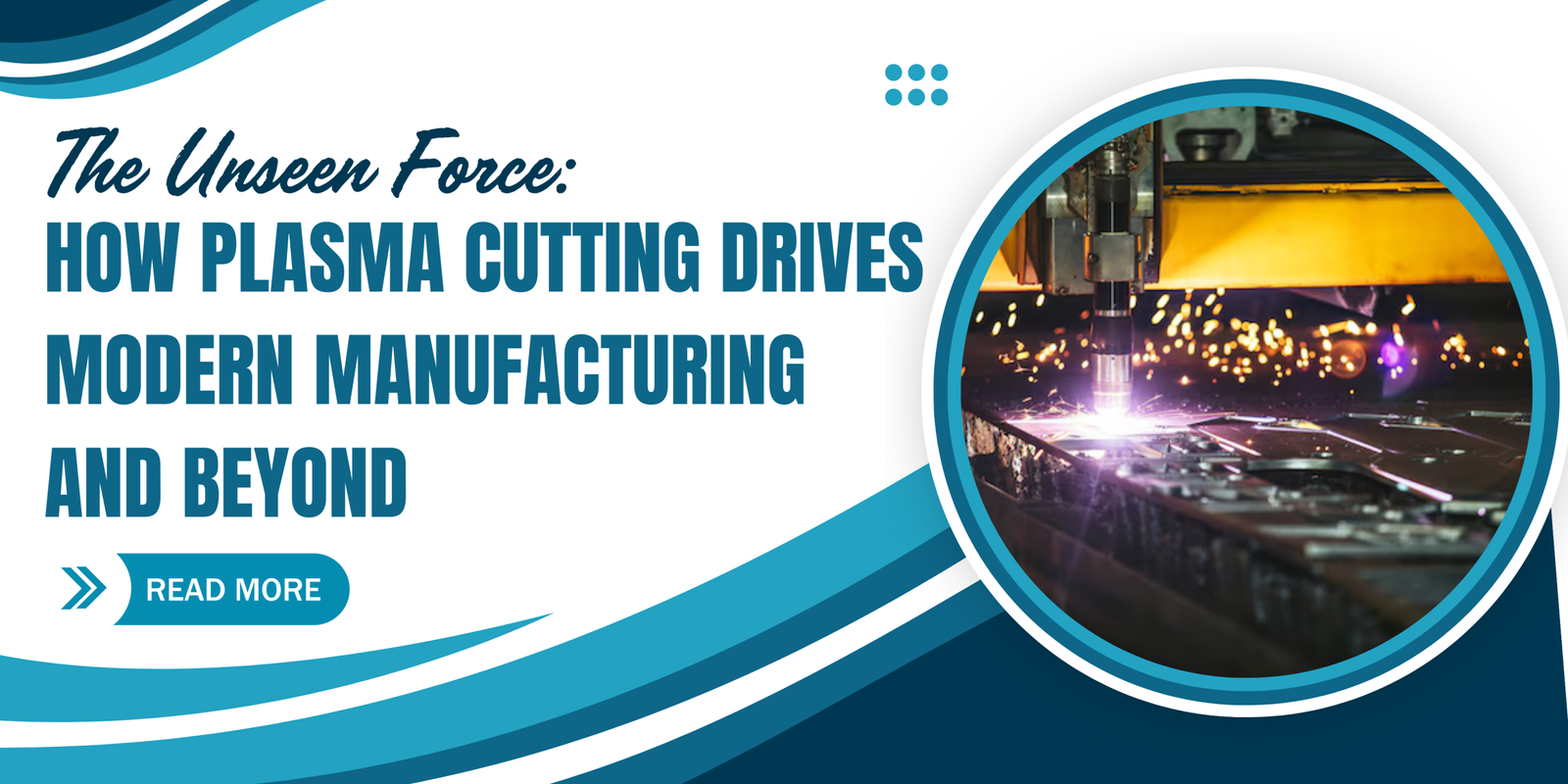Introduction
The drive for efficiency, precision, and cost-effectiveness is relentless. Plasma cutting has emerged as a silent powerhouse, playing a critical and often understated role in shaping the very foundation of modern manufacturing. This technology, which harnesses the intense heat of an electrically ionized gas, has revolutionized the way industries process metals, offering advantages that traditional methods cannot match.
Precision at the Core: What is Plasma Cutting?
Plasma cutting involves creating an electric arc that heats a gas to incredibly high temperatures, turning it into plasma. When integrated with CNC systems, this process becomes exceptionally precise and repeatable, making it ideal for both intricate designs and large-scale production.
The Pillars of Impact: Why Plasma Cutting Matters
Unrivaled Speed and Efficiency:
Nowadays, where time is money, plasma cutting stands out for its remarkable speed. It can cut through electrically conductive metals significantly faster and with a better finish than traditional methods, mainly for very thin to medium-thick materials. This high demand and rapid processing capability directly translates to reduced production times and increased output with the best finish result, allowing clients to meet tight deadlines and operate efficiently.
Material Versatility: A Fabricator’s Dream:
The most valuable advantage of plasma cutting is its ability to slice through virtually any electrically conductive metal. This includes common industrial materials like mild steel, stainless steel, and aluminum, as well as more specialized alloys like brass and copper. This method makes plasma cutters indispensable across a broad spectrum of industries, from the heavy machinery and automotive sectors to intricate fabrication and construction projects.
Precision Engineering and Quality Finishes:
Modern manufacturing methods demand the finest cuts, and this is where CNC-controlled plasma cutting shines. It delivers exceptional precision and repeatability, crucial for producing components with approximately zero tolerances. This means less need for secondary finishing operations, leading to higher quality parts straight off the cutting table.
Cost-Effectiveness and Resource Optimization:
For many applications, plasma cutting offers a highly cost-effective solution compared to more expensive cutting methods like laser or waterjet cutting, especially when dealing with thicker materials. Plasma cutting reduces power consumption and consumable costs, too; on a single sheet of metal, it provides more savings in operational costs. This cutting method is effective economically, and its advantage is particularly beneficial for clients looking to optimize their budgets without compromising on the quality of their material or speed.
Enhanced Safety and Automation:
At Anand Engineering Corporation, integrating plasma cutting with advanced automation techniques and robotics is a game-changer for workplace safety. Workers can operate their program from a safe distance, reducing exposure to high temperatures, fumes, and sparks. This not only creates a safer working environment but also allows for continuous operation, further boosting productivity and consistency.
The Future is Bright
The role of plasma cutting will only grow. Its blend of speed, versatility, precision, and cost-effectiveness ensures its place as a cornerstone technology, empowering industries and beyond to innovate and excel in the competitive global market. The humble plasma cutter, in its silent operation, continues to cut a path toward a more efficient and productive future.

